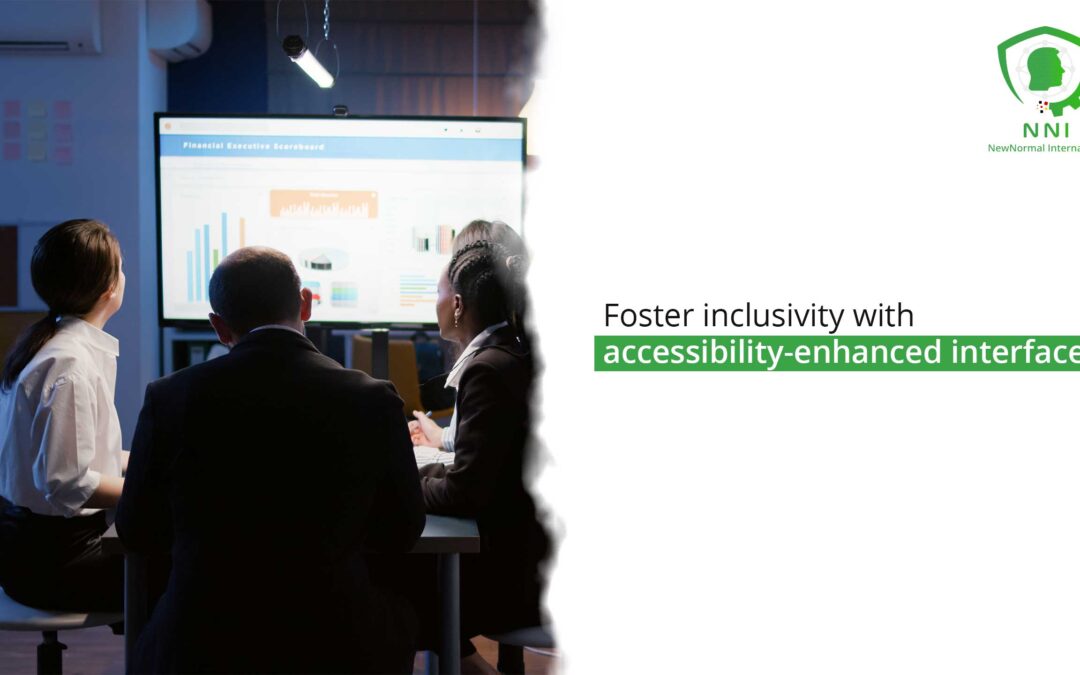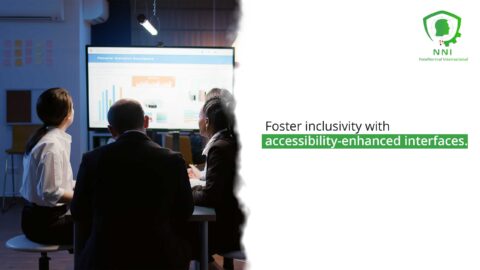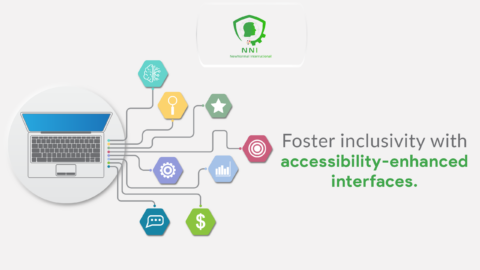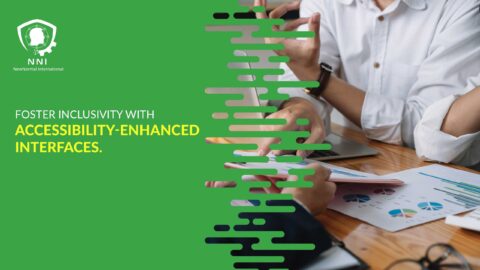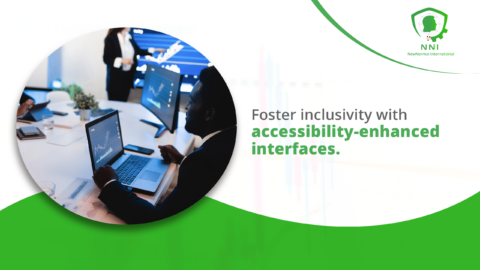Creating Inclusive Work Environments through Improved Accessibility
In today’s diverse business landscape, the need to foster inclusivity with accessibility-enhanced interfaces is more crucial than ever. This article explores the significance of implementing accessibility features in business interfaces to create a more inclusive and equitable environment.
The Importance of Accessibility-Enhanced Interfaces
In today’s digital age, inclusivity is not merely an aspiration, but a necessity. Accessibility-enhanced interfaces, designed to be user-friendly for individuals with disabilities, serve as the bridge to a more inclusive digital landscape. By removing barriers and facilitating access for all, these interfaces offer a multitude of benefits:
1. Ethical and Legal Compliance: Adhering to accessibility standards and regulations is not just a legal requirement; it’s an ethical imperative. Accessibility-enhanced interfaces ensure that all individuals can access information and services, regardless of their abilities, fostering a more equitable and inclusive society.
2. Expanded Reach and Market Potential: By making their online presence accessible, businesses can tap into a broader audience, including the over 1 billion individuals worldwide who have disabilities. This expanded reach translates to increased market potential and a wider customer base.
3. Enhanced Brand Reputation and Customer Loyalty: Demonstrating a commitment to inclusivity through accessibility-enhanced interfaces fosters positive brand perception and strengthens customer loyalty. This commitment leads to a more positive brand image and a stronger connection with a diverse audience.
4. Improved User Experience and Satisfaction: When interfaces are designed to be accessible to all, everyone benefits from a more intuitive and user-friendly experience. This leads to greater satisfaction and engagement for all users, regardless of their abilities.
5. Innovation and Continuous Improvement: The pursuit of accessibility drives innovation in interface design and development. By seeking solutions to overcome accessibility challenges, businesses push the boundaries of technology and create better experiences for all users.
Beyond these tangible benefits, accessibility-enhanced interfaces cultivate a culture of diversity and inclusion within organizations. By fostering a mindset that recognizes and celebrates individual differences, businesses create an environment where everyone feels valued and empowered to contribute their unique talents and perspectives.
In conclusion, accessibility-enhanced interfaces are not just technical modifications; they are the foundation for a more inclusive digital future. By embracing accessibility and designing user interfaces that cater to all individuals, businesses can unlock a world of opportunities, from expanded market reach and enhanced brand reputation to improved user experience and a more diverse and inclusive workforce. Let accessibility be your guiding principle as you build a digital landscape that welcomes everyone, celebrates differences, and empowers all individuals to reach their full potential.
Change Management and Inclusivity
Effective change management involves recognizing the need for and implementing accessibility enhancements in business interfaces. This process requires thoughtful planning and a commitment to inclusivity at every level of the organization.
Leadership in Driving Accessibility Initiatives
Leadership plays a crucial role in advocating for and driving accessibility initiatives. Through executive coaching, leaders can learn the importance of inclusive practices and how to implement them effectively in their business strategies.
Effective Communication in Promoting Accessibility
Effective communication is essential in promoting the importance of accessibility-enhanced interfaces within an organization. It involves educating employees about inclusivity and the benefits of accessible designs.
Leveraging Generative AI for Enhanced Accessibility
The integration of generative artificial intelligence can significantly improve the development of accessibility-enhanced interfaces. AI can help identify accessibility issues, suggest design improvements, and personalize user experiences.
Conclusion
In conclusion, the commitment to “Foster inclusivity with accessibility-enhanced interfaces” is not only a moral imperative but also a strategic business decision. Embracing accessibility in business interfaces opens up new opportunities for innovation, customer engagement, and a more inclusive workplace.
#Inclusivity, #Accessibility, #BusinessInnovation, #ChangeManagement, #AIinBusiness


